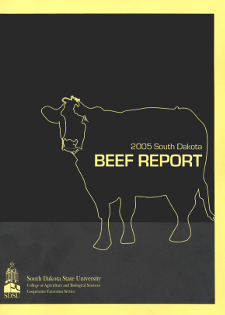Title
Forecasting Forage Yield on Clayey Ecological Sites in Western South Dakota using Weather Data
Document Type
Report
Report Number
2005-22
Publication Date
2005
Keywords
forage, weather variables, weather data
Summary
The ability to forecast annual forage yield from weather data would be useful for making appropriate adjustments to stocking rates in order to achieve or maintain desired plant communities. Our objective was to determine the relationship between weather variables and annual forage yield from three distinct plant communities on clayey ecological sites in western South Dakota. Forage yield and weather data were collected from 1945 through 1960 at the Cottonwood Range and Livestock Research Station, in western South Dakota. Pastures stocked at 0.25, 0.40, and 0.60 AUM/acre from 1942 to 1960 developed into western wheatgrass-dominated, western wheatgrass-shortgrass co-dominated, and shortgrass dominated plant communities, respectively. Forage data were compiled from previously reported data and raw data. Spring (April-June) precipitation, the last calendar day that the minimum temperature was 30oF or below, and previous year’s spring precipitation were best predictors (R2 = 0.81) of forage yield in western wheatgrass dominated plant communities. Spring precipitation and the last calendar day that the minimum temperature was 30oF or below were best predictors (R2 = 0.69) of forage yield in western wheatgrass-shortgrass co-dominated plant communities. Spring precipitation was the best predictor (R2 = 0.52) of forage yield in shortgrass dominated plant communities. In western South Dakota, managers of these plant communities can make reliable estimates of annual forage yield by the end of June using precipitation and temperature measurements.
Number of Pages
7
Format
application/pdf
Language
en
Publisher
South Dakota State University
Rights
Copyright © 2005 South Dakota State University
Recommended Citation
Smart, Alexander J.; Dunn, Barry H.; Xu, Lan; Johnson, Patricia S.; and Gates, Roger N., "Forecasting Forage Yield on Clayey Ecological Sites in Western South Dakota using Weather Data" (2005). South Dakota Beef Report, 2005. 23.
https://openprairie.sdstate.edu/sd_beefreport_2005/23


